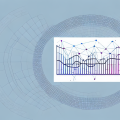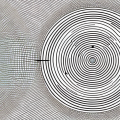Statistical analysis allows users to make sense of the numbers behind a dataset. Two important concepts in this realm are the variance and standard deviation, which are commonly used to measure distances from the mean or average. Despite their similarities, the standard deviation is commonly used far more than the variance. In this article, we’ll explore why this is, how the two measurements are related, and how to calculate them.
What Is the Standard Deviation?
The standard deviation is a statistical measure of how widely values in a dataset are dispersed from its average. To calculate it, each data point is first subtracted from the mean, and these values are squared before being summed. Then the square root of this sum is taken and this is the standard deviation. The formula looks like this:
SD = √Σ(xi – μ)2 / N
In this formula, SD stands for standard deviation, xi is each data point, N is the size of the dataset (the number of data points), and μ is the mean. The square root is taken from the result of the equation to obtain the standard deviation.
What Is the Variance?
Variance is similar to standard deviation and it is used for numeric data as well. It is essentially the average square distance of each data point in a set from its mean. To calculate it, each data point is first subtracted from the mean, then these values are squared and averaged. The formula looks like this:
Var = Σ(xi – μ)2 / N
In this formula, Var stands for variance, xi is each data point, N is the size of the dataset (the number of data points), and μ is the mean.
How Are the Standard Deviation and Variance Related?
The main difference between standard deviation and variance is that standard deviation uses a square root function while variance does not. This means that standard deviation measures the variation from the mean in units that are of the same order as the units of the original values (e.g. centimeters) whereas variance measures them in square units.
Benefits of Using the Standard Deviation Over the Variance
The most important benefit of using standard deviation over variance is that it provides an intuitive understanding of variability in terms that are more familiar to researchers. Because standard deviation measures variability in units similar to the original data, it gives us an accurate understanding of how far away values are from the mean. In other words, it is a more precise measure of how far away each data point is from the mean and hence can paint a better picture of how spread out values are.
On the other hand, variance is slightly more complicated and doesn’t produce an intuitive understanding of variability in figures that we can easily understand. Although both measures provide an estimate of variability, standard deviation tends to be used more often because it provides a simpler way to understand variability and it’s also easier to calculate.
How to Calculate the Standard Deviation and Variance
Calculating both the standard deviation and variance involves following the formulas provided:
SD = √Σ(xi – μ)2 / N
Var = Σ(xi – μ)2 / N
To calculate the standard deviation and variance, first determine the size of your dataset (N). Then find the mean by adding all data points together and dividing by N. Subtract your mean from each data point, square it and sum up all these squared terms. To obtain your variance, divide your sum by N and for standard deviation, take the square root of your sum divided by N.
Examples of When to Use the Standard Deviation or Variance
When analyzing a dataset, it’s always best to use whichever measure provides an understanding that is relevant to your research:
- Measuring Spread in A Dataset: Use standard deviation when measuring spread in a dataset as it provides an intuitive understanding in terms that more familiar to researchers.
- Distributing a Set: Use variance when wanting to distribute a set. This is because variance measures individual components of the total spread of a dataset.
Common Misconceptions About Using the Standard Deviation and Variance
A common misconception is that standard deviation and variance are interchangeable. Although they are related, they measure different aspects of your dataset. Another misconception is that variance is always greater than standard deviation, however this isn’t always true.
Conclusion
In conclusion, the standard deviation is used more frequently than the variance because it provides an intuitive understanding of how spread out values in a dataset are in terms that researchers can understand. Variance is useful when wanting to distribute a set because it takes into account individual components that comprise total variability. It’s important to keep in mind that they measure different aspects of your dataset and one isn’t always greater than the other.





